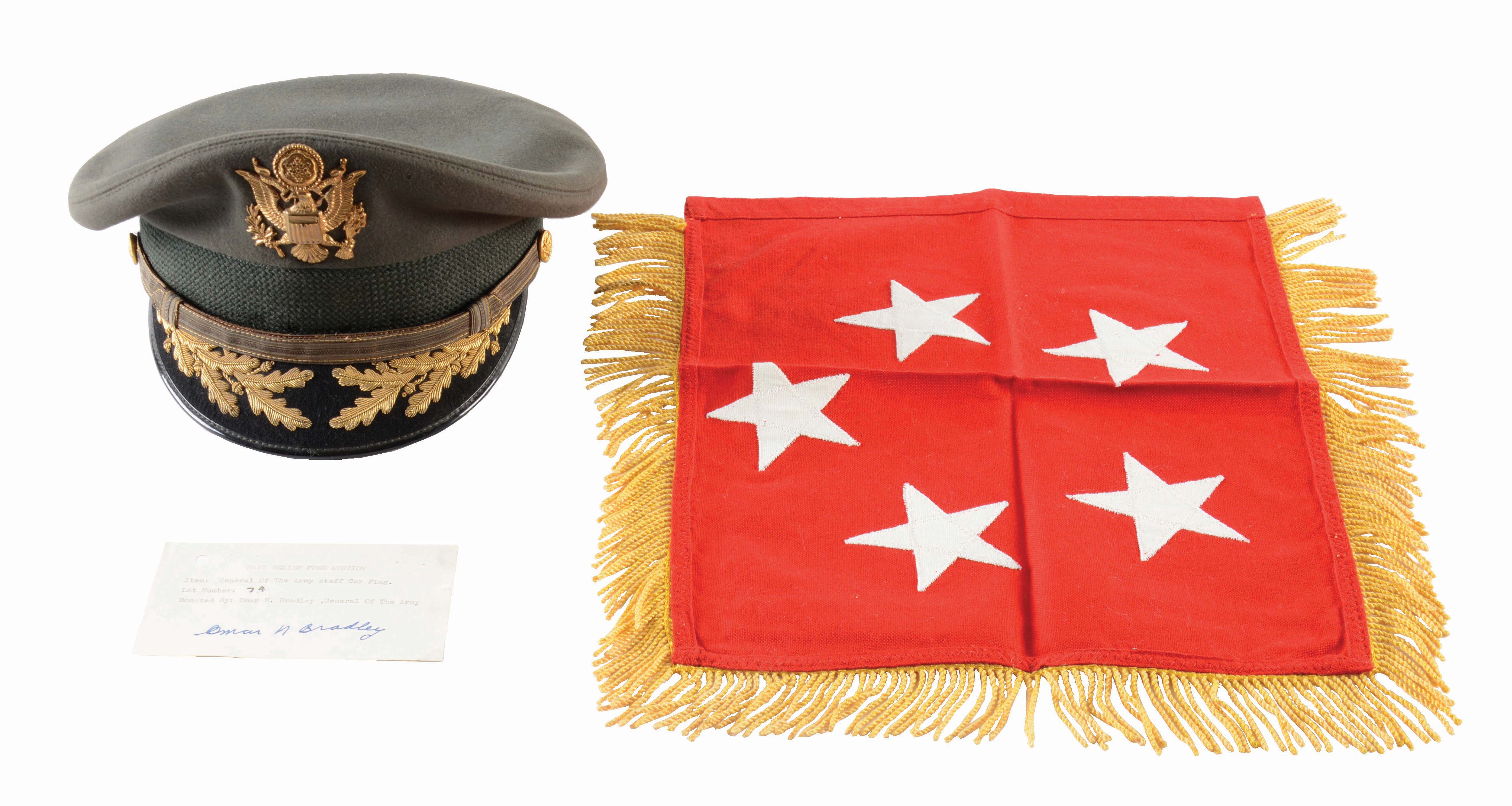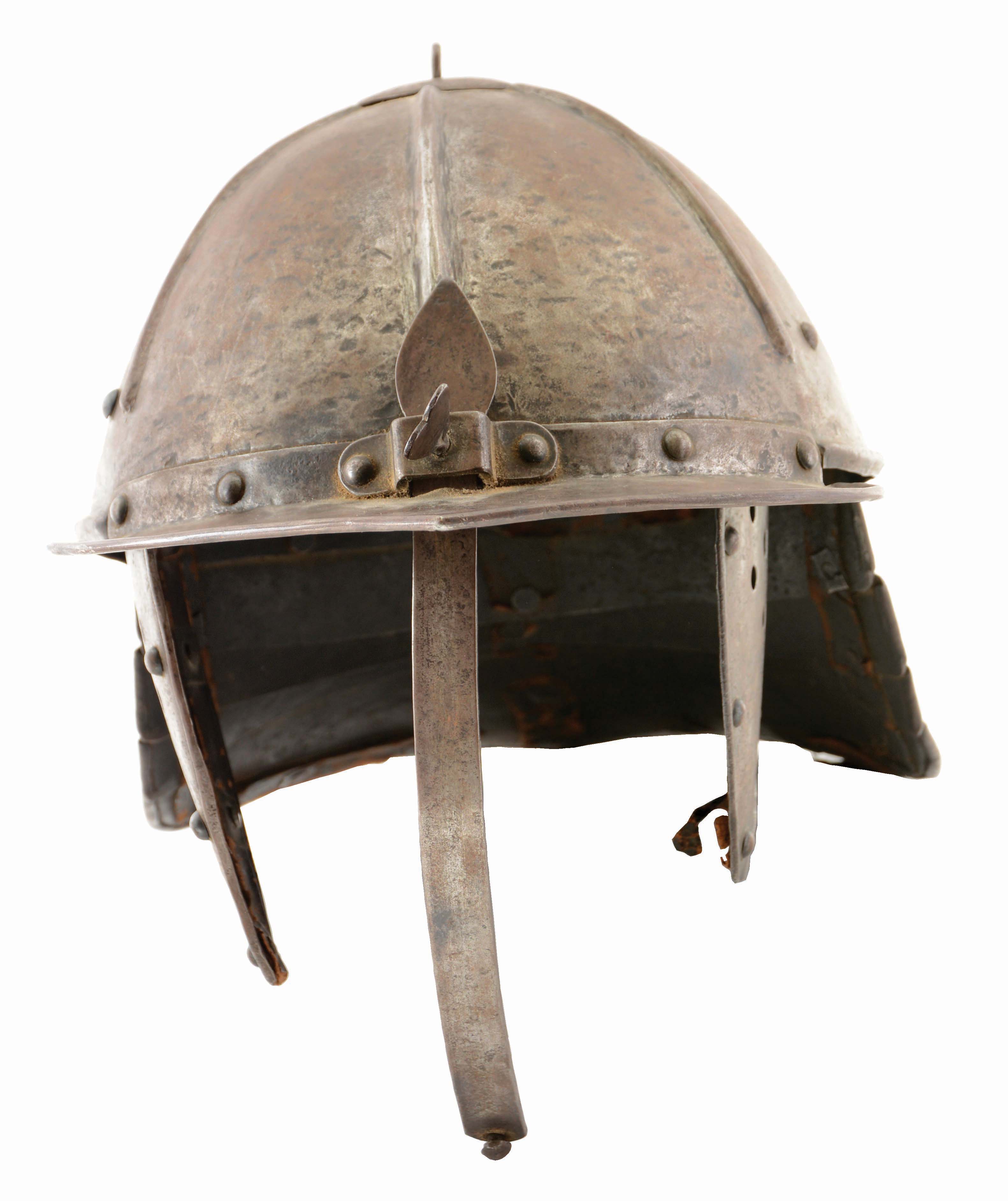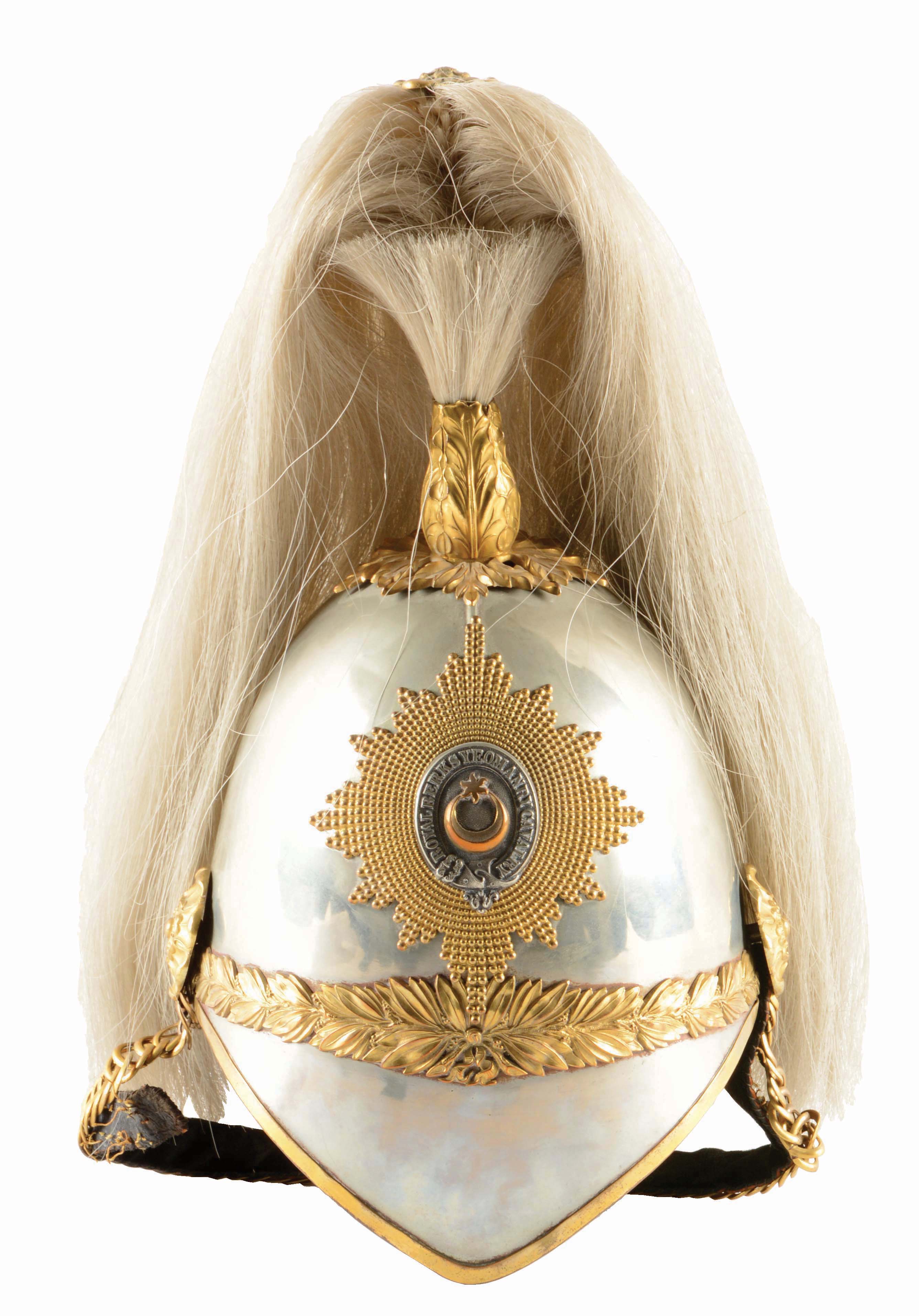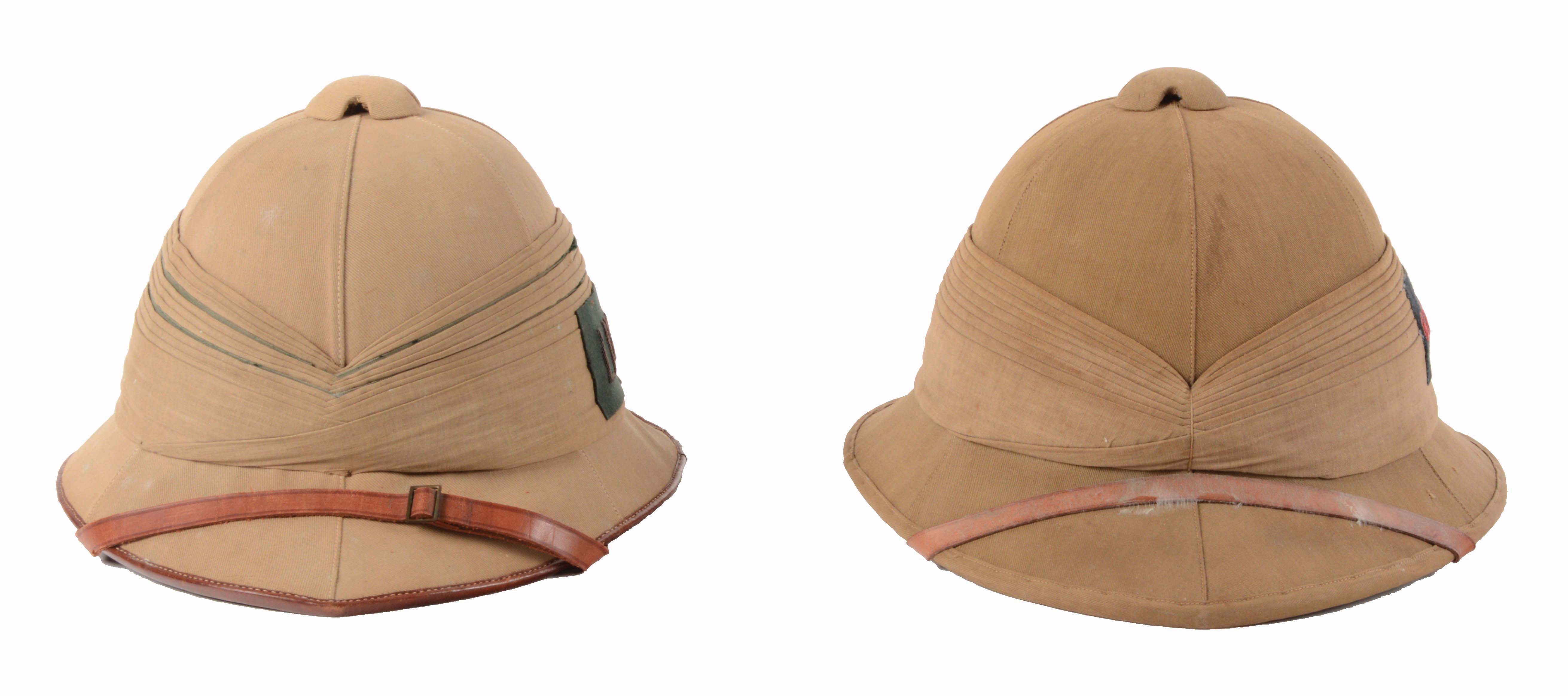M1840 "wristbreaker" cavalry saber with acid etched presentation blade to "WILLIAM B. HAZEN - 9th INDIANA VOL USA." This historic sword was presented to William Babcock Hazen (September 27th, 1830 – January 16th, 1887) who was a career United States Army officer who served in the Indian Wars, as a Union general in the American Civil War, and as Chief Signal Officer of the U.S. Army. His most famous service was defending "Hell's Half Acre" at the Battle of Stones River in 1862. The sword was given to him by the troops of the 9th Indiana Volunteer Infantry for services rendered as their brigade commander at Stone's River. Hazen was born in West Hartford, Vermont, but moved to Ohio at the age of three. He spent his boyhood in the town of Hiram and formed a close personal friendship with future President James A. Garfield. He graduated from the United States Military Academy, in 1855, and was commissioned a second lieutenant in the 4th U.S. Infantry. Before the Civil War, he served primarily in the Pacific Northwest and Texas, where he was wounded severely on November 3, 1859, during a fight with the Comanches along the Llano River. He was absent on sick leave until 1861. Soon after the fall of Fort Sumter, he was promoted to captain of the 8th U.S. Infantry, and by October 29th, 1861, he was Colonel of the 41st Ohio Infantry. Starting in January 1862, he commanded a brigade in the Army of the Ohio, under Major General Don Carlos Buell. His first major battle was Shiloh, where Buell's army arrived on the second day (April 7th, 1862), in time to counterattack the Confederate army for a Union victory. In the fall of 1862, Hazen fought under Buell at Perryville. His brigade was reorganized into the XIV Corps (later to be known as the Army of the Cumberland) under Major General William S. Rosecrans, and, in this organization, Hazen served in his most famous engagement, the Battle of Stones River, at Murfreesboro, Tennessee. On December 31st, 1862, the Confederate forces under General Braxton Bragg delivered a devastating assault that caught Rosecrans by surprise and drove his forces back three miles (5 km), leaving their backs to the Stones River. Hazen's brigade defended a small cedar forest known by the locals as "Round Forest". Hazen and Brigadier General Charles Cruft were at a salient in the Union line, whose loss would have given the Confederate a complete victory. Major General George H. Thomas and Lovell H. Rousseau, Hazen's division commander, concentrated artillery to support them. Several Confederate attacks were beaten off. Their defense was so spirited against heavy odds that they arguably saved the Union line. The four acre Round Forest is now known informally as "Hell's Half Acre". Hazen was wounded in the shoulder during the fight and was promoted to brigadier general, effective November 29th, for his gallantry. Months after the battle, a monument was erected by veterans of the fight in a small Union cemetery at the site. This is considered to be the oldest monument erected on a Civil War battlefield. The Hazen Brigade Monument stands in the brigade's cemetery marking the position defended by that unit during the Battle of Stones River on December 31st, 1862. It is the oldest American Civil War monument still standing in its original battlefield location. Colonel William B. Hazen's brigade played a central role in the fighting at the Round Forest on the first day of the Battle of Stones River. Hazen's men held their position between the Nashville Pike and the Nashville and Chattanooga Railroad through four Confederate attacks. The brigade's determined resistance ended the advance of the Confederate Army of Tennessee and kept it from pushing the Union Army of the Cumberland back to Nashville. After the battle, Hazen and Colonel Isaac C. B. Suman, 9th Indiana Volunteers, felt there was a need for a monument to honor the soldiers who died at Stones River. Lieutenant Edward Crebbin, Company F, 9th Indiana, led a detail of
M1840 "wristbreaker" cavalry saber with acid etched presentation blade to "WILLIAM B. HAZEN - 9th INDIANA VOL USA." This historic sword was presented to William Babcock Hazen (September 27th, 1830 – January 16th, 1887) who was a career United States Army officer who served in the Indian Wars, as a Union general in the American Civil War, and as Chief Signal Officer of the U.S. Army. His most famous service was defending "Hell's Half Acre" at the Battle of Stones River in 1862. The sword was given to him by the troops of the 9th Indiana Volunteer Infantry for services rendered as their brigade commander at Stone's River. Hazen was born in West Hartford, Vermont, but moved to Ohio at the age of three. He spent his boyhood in the town of Hiram and formed a close personal friendship with future President James A. Garfield. He graduated from the United States Military Academy, in 1855, and was commissioned a second lieutenant in the 4th U.S. Infantry. Before the Civil War, he served primarily in the Pacific Northwest and Texas, where he was wounded severely on November 3, 1859, during a fight with the Comanches along the Llano River. He was absent on sick leave until 1861. Soon after the fall of Fort Sumter, he was promoted to captain of the 8th U.S. Infantry, and by October 29th, 1861, he was Colonel of the 41st Ohio Infantry. Starting in January 1862, he commanded a brigade in the Army of the Ohio, under Major General Don Carlos Buell. His first major battle was Shiloh, where Buell's army arrived on the second day (April 7th, 1862), in time to counterattack the Confederate army for a Union victory. In the fall of 1862, Hazen fought under Buell at Perryville. His brigade was reorganized into the XIV Corps (later to be known as the Army of the Cumberland) under Major General William S. Rosecrans, and, in this organization, Hazen served in his most famous engagement, the Battle of Stones River, at Murfreesboro, Tennessee. On December 31st, 1862, the Confederate forces under General Braxton Bragg delivered a devastating assault that caught Rosecrans by surprise and drove his forces back three miles (5 km), leaving their backs to the Stones River. Hazen's brigade defended a small cedar forest known by the locals as "Round Forest". Hazen and Brigadier General Charles Cruft were at a salient in the Union line, whose loss would have given the Confederate a complete victory. Major General George H. Thomas and Lovell H. Rousseau, Hazen's division commander, concentrated artillery to support them. Several Confederate attacks were beaten off. Their defense was so spirited against heavy odds that they arguably saved the Union line. The four acre Round Forest is now known informally as "Hell's Half Acre". Hazen was wounded in the shoulder during the fight and was promoted to brigadier general, effective November 29th, for his gallantry. Months after the battle, a monument was erected by veterans of the fight in a small Union cemetery at the site. This is considered to be the oldest monument erected on a Civil War battlefield. The Hazen Brigade Monument stands in the brigade's cemetery marking the position defended by that unit during the Battle of Stones River on December 31st, 1862. It is the oldest American Civil War monument still standing in its original battlefield location. Colonel William B. Hazen's brigade played a central role in the fighting at the Round Forest on the first day of the Battle of Stones River. Hazen's men held their position between the Nashville Pike and the Nashville and Chattanooga Railroad through four Confederate attacks. The brigade's determined resistance ended the advance of the Confederate Army of Tennessee and kept it from pushing the Union Army of the Cumberland back to Nashville. After the battle, Hazen and Colonel Isaac C. B. Suman, 9th Indiana Volunteers, felt there was a need for a monument to honor the soldiers who died at Stones River. Lieutenant Edward Crebbin, Company F, 9th Indiana, led a detail of















Try LotSearch and its premium features for 7 days - without any costs!
Be notified automatically about new items in upcoming auctions.
Create an alert